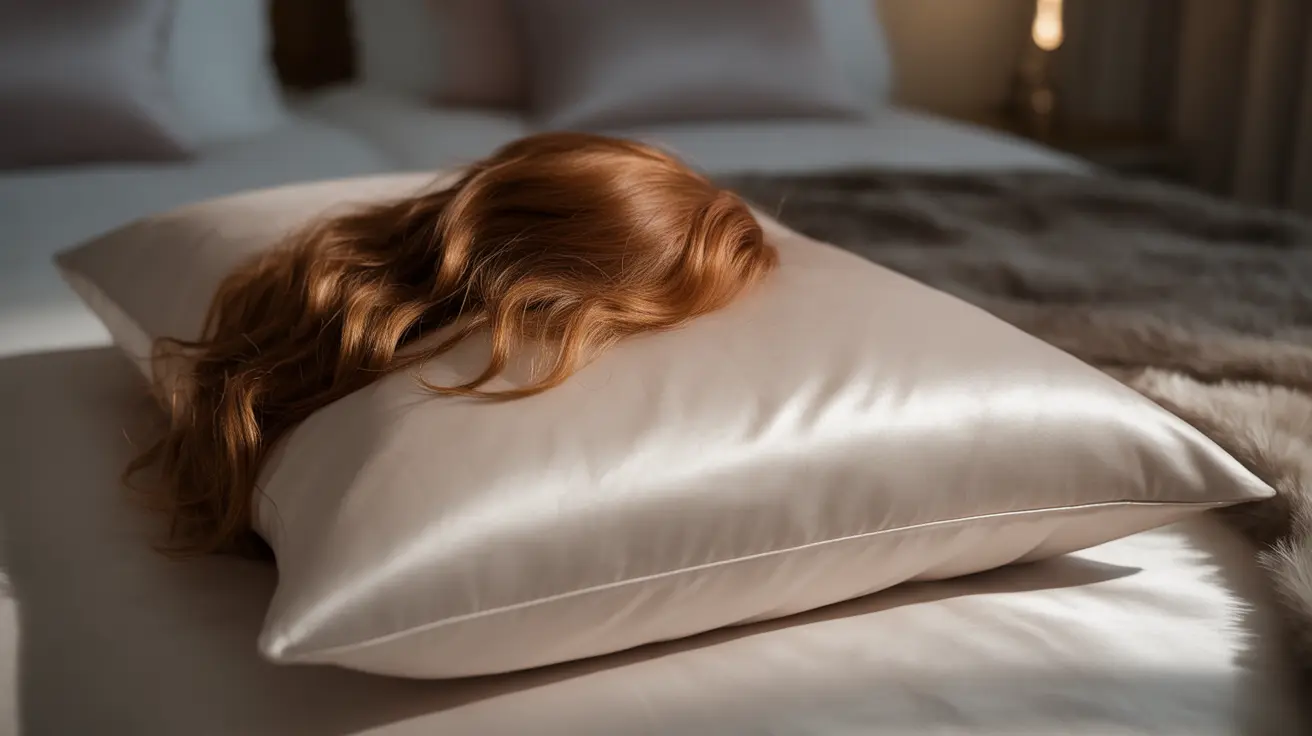If you're looking to improve your hair care routine, the solution might be simpler than you think. Satin pillowcases have gained popularity as a beauty secret weapon, offering numerous benefits for hair health and maintenance. Understanding how this simple switch in bedding can transform your hair care routine is essential for anyone seeking healthier, more manageable locks.
In this comprehensive guide, we'll explore why satin pillowcases are good for hair and how they can revolutionize your nighttime hair care routine. From reducing friction to maintaining moisture, these smooth surfaces offer multiple advantages over traditional cotton pillowcases.
How Satin Pillowcases Protect Your Hair
The primary benefit of satin pillowcases lies in their smooth, friction-free surface. Unlike cotton, which can catch and snag hair strands, satin allows hair to glide freely across the surface. This reduction in friction leads to less tangling, breakage, and split ends, particularly beneficial for those with delicate or processed hair.
The smooth texture of satin also helps maintain your hairstyle overnight, making it an excellent choice for those who invest time in styling their hair. Whether you have straight, wavy, or curly hair, you'll likely notice less bedhead in the morning.
Moisture Retention and Hair Health
One of the most significant advantages of satin pillowcases is their ability to help hair retain moisture. Cotton pillowcases can absorb natural oils from your hair, leading to dryness and potential damage. Satin, being less absorbent, allows your hair to maintain its natural moisture balance throughout the night.
Benefits for Different Hair Types
Satin pillowcases work exceptionally well for various hair types:
- Curly hair: Helps maintain curl pattern and reduce frizz
- Fine hair: Prevents breakage and maintains volume
- Coarse hair: Helps retain moisture and reduce friction
- Chemically treated hair: Protects fragile strands from damage
Maintenance and Care Tips
To maximize the benefits of your satin pillowcase, proper maintenance is essential. Regular washing every 7-10 days helps prevent product buildup and maintains the smooth surface. Use gentle, cold water washing and avoid harsh detergents that might damage the fabric's beneficial properties.
Satin vs. Silk: Understanding the Difference
While both materials offer similar benefits, satin pillowcases are typically more affordable and easier to maintain than silk. Satin is a weave rather than a fiber, usually made from polyester or nylon, while silk is a natural protein fiber. Both provide excellent hair care benefits, though silk may offer additional cooling properties.
Frequently Asked Questions
What are the main benefits of using a satin pillowcase for hair compared to cotton?
Satin pillowcases reduce friction, prevent tangles, and help maintain hair moisture levels. Unlike cotton, which can rough up the hair cuticle, satin allows hair to glide smoothly, reducing breakage and maintaining style integrity overnight.
Can a satin pillowcase help reduce frizz, tangles, and hair breakage, especially for curly hair?
Yes, satin pillowcases are particularly beneficial for curly hair. The smooth surface helps maintain curl pattern, reduces frizz, and prevents the formation of tangles and knots that often occur with cotton pillowcases.
How does sleeping on a satin pillowcase help keep my hair hydrated and healthy?
Satin doesn't absorb moisture from your hair like cotton does. This means your hair's natural oils stay where they belong - in your hair - helping to maintain proper hydration levels and overall hair health.
Is there a difference between satin and silk pillowcases when it comes to protecting hair?
While both materials offer similar benefits for hair protection, satin is typically more durable and affordable. Silk is a natural fiber that may offer additional benefits like temperature regulation, but satin provides comparable hair protection at a lower cost.
Is a satin pillowcase suitable for all hair types, and how often should it be washed for best results?
Satin pillowcases are beneficial for all hair types, from straight to coily. For optimal results, wash your satin pillowcase every 7-10 days using gentle detergent and cold water to maintain its protective properties and keep it clean from oil and product buildup.




